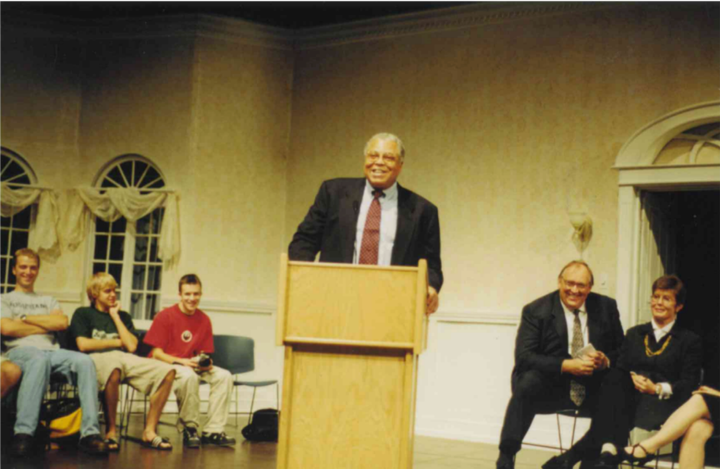AU welcomes largest freshman class since ’78
JESSICA RUF
Augustana’s ship set sail this year with sixty more Vikings in the current freshman class than last year’s. At 481 students, the class of 2021 is the largest incoming group since 1978.
That makes Augustana an outlier when compared to other private Lutheran colleges which are struggling to attract new students, according to Adam Heinitz, director of admissions. What drew an extra 14 percent of freshman to our campus?
“That has been the million-dollar question,” Heinitz said.
Meanwhile, Vice President for Enrollment, Nancy Davidson has her theories. She believes the answers trace back two years ago when Augustana College publicly rebranded itself as Augustana University.
“Institutionally, we invested more dollars in marketing than we typically had,” Davidson said. “And last year, we rolled out a great marketing campaign, the ‘Be a Viking’ campaign which was exciting.”

Davidson also cites the Froiland Science Complex as another attraction responsible for pulling prospective students to Augustana. FSC’s classrooms and laboratories opened during the fall of the current freshmen class’ senior year of high school, allowing them to tour a finished $35 million facility, rather than an under-construction Gilbert Science Center.
If prospective students liked what they saw, changes in the application requirements allowed them to fill out an application for admission faster than students in previous years could.
“In the winter of 2016, we were no longer requiring an essay, which got students to the admitted status faster,” Davidson said.”
“Even bright students are extremely busy and while it seems like a high-priority to submit a college essay, it’s kind of overwhelming, so they put it off,” Heintz said.
Additionally, once those students were admitted, they received scholarship information earlier than applicants in previous years.
“We made our scholarship awarding more transparent and a little more generous as students have affirmed,” Davidson said.
This year, the average cost for a first-year student is $15, 978.
“This will sound self-serving, but our admissions counselors, who work with freshmen, deserve a ton of credit. We really benefit with both the consistency of that group and in that they’re hard working and engaged,” Heinitz.
Heinitz wasn’t alone in his opinion.
On the enrolled student survey, Davidson said several students mentioned the relationship with their admissions counselor as a contributing factor to choosing Augustana.
In the survey, freshmen also listed the quality of Augustana’s academics as one of their key reasons for enrolling.
Seeing the rising student population as both economically and socially beneficial, Dean of Students Jim Bies says he hopes the trend continues.
“The more students you have, the less financial stress you have and the more revenue there is available to build additional housing,” Bies said. “From a student perspective, it means more interactions, more interests. It makes the college campus more upbeat.”
If the trend does continue, it begs the questions: At what point does Augustana want to stop growing? When will the university reach its carrying capacity?
According to Bies, four main factors determine Augustana’s carrying capacity: available academic space, residence halls, dining services and parking.
With freshmen already living in Tuve Hall and the number of available parking spots growing more and more sparse, the university is brainstorming new living areas for students and new parking spaces.
Augustana is also brainstorming ways to alleviate the growing lunch line stretching out of the cafeteria and into the commons at noon.
“That isn’t a matter of putting more tables in the dining room or making a larger dining room,” Bies said. “It may mean that we look at an alternative dining facility. Maybe students are going to grab a meal or something some place else on campus.”
Aside from parking spots and dining tables, both Bies and Davidson said the main priority of Augustana is to ensure the university delivers the same academic experience students currently receive, regardless of how many Vikings board the ship.



